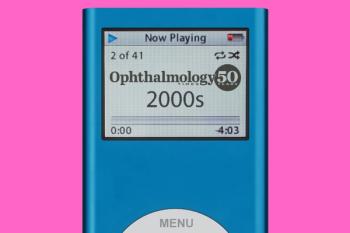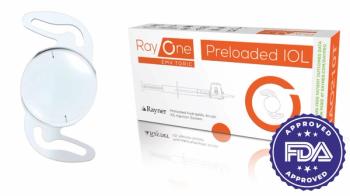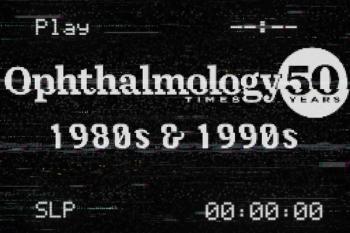
New IOL design trends avoid negative dysphotopsias
Newer lab studies reveal increased posterior chamber depth does not cause ND and that any IOL, irrespective of material or edge design, implanted in the capsule bag can result in ND, which resolves when the very same inciting lens is moved from the bag to the ciliary sulcus.
Dysphotopsia may be one of the most under recognized complications following otherwise unremarkable cataract surgery. Based on subjective symptoms, up to
20% of patents have negative dysphotopsia (ND), a temporal dark shadow after intraocular lens implantation. Other patients have positive dysphotopsia (PD), characterized by light streaks, arcs, central light flashing or star bursts. Some patients may have both ND and PD.
“Overall, dysphotopsia has not been studied particularly well, especially epidemiologically,” said Samuel Masket, MD, founding partner, Advanced Vision Care, and clinical professor of ophthalmology at the David Geffen School of Medicine, Stein Eye Institute, University of California, Los Angeles. “There are likely 400,000 to 500,000 new cases of chronic ND every year globally.”
The good news, he continued, is that early ND symptoms tend to improve over time due to neuro-adaptation, but about 3% of cases will have chronic ND at one year after surgery. The better news is that novel IOL designs and surgical techniques can correct and prevent ND.
PD is directly related to square edge design and the index of refraction of an IOL. The higher the index of refraction, the greater the likelihood of PD after the lens is implanted. The etiology of PD is well understood.
However, ND is far more complicated. It is a temporal dark arc, similar to the effect of putting blinders on a horse. Unlike PD, there is no good correlation between clinical findings and optical lab findings, Dr. Masket said.
Some researchers have suggested that square edges can cast ND shadows where rounded edges do not. And some have indicated that ND is also associated with a greater iris to IOL distance and an expanded posterior chamber depth. However, these assertions are not supported in clinical investigations.
Newer lab studies reveal increased posterior chamber depth does not cause ND and that any IOL, irrespective of material or edge design, implanted in the capsule bag can result in ND, which resolves when the very same inciting lens is moved from the bag to the ciliary sulcus. These findings suggest a relationship between the IOL and capsule bag as central to ND.
“Historically, every intraocular lens on the market in the United States has been associated with ND,” Dr. Masket said. “Clinically, any in the bag IOL with the capsulotomy edge overlying the optic, especially on the nasal side, may be associated with ND. While ND is likely multifactorial, it is prevented, relieved or improved when the IOL optic edge overlies the nasal capsulotomy, rather than the capsulotomy overlying the optic edge.
Dr. Masket published reverse optic capture (ROC), either as a therapeutic or prophylactic measure for ND, in 2011. A 2018 update with ROC in 43 eyes showed very good success, he reported. Of 22 eyes with chronic ND, 21 were corrected with secondary ROC and 21/21 contralateral eyes successfully avoided ND using primary ROC.
“We have never had a failure doing primary reverse optic capture, he said. “We have also had success with bag-sulcus exchange and some success with piggyback lenses, but not with bag-bag exchanges.”
But primary ROC is not without concern. All of the eyes that underwent primary ROC placement had fibrotic PCO that required laser posterior capsulotomy within three months of the initial surgery. And long-term piggyback or sulcus placement have the potential for iris chaffing and decentration.
“I developed an anti-dysphotopic IOL that mimics reverse optic capture but leaves most of the lens in the bag to prevent fibrosis,” Dr. Masket said. “The lens has a grove on the anterior optic edge to capture the capsulotomy. That arrangement provides for optic overlying the capsule rather than the capsule overlying the optic, and the IOL becomes fixated by the anterior capsule.”
Dr. Masket’s original lens was licensed and modified by Morcher. It has CE marking and is being developed as the model 90S. There have been no symptoms of ND in the first 175 lenses implanted, he reported, six cases of non-debilitating PD and no iris chafe.
Two other capsulotomy supported IOLs have been CE marked, he reported, the Tassignon “BIL” (Morcher) and the Femtis (Occulentis). The Tassignon lens has had no reported ND in several thousand uses and the Femtis has had no ND in its reported series of 384 lenses, providing clear support for the theory that optic over capsule, rather than capsule over optic, will prevent ND.
In addition to the absence of ND, capsulotomy supported IOLs have a more predictable ELP, a stable toric axis, absence of capsule contraction, perfect centration when the capsulotomy is centered on the visual axis , reduced HOA and limited optic tilt.
“There is likely a future for this design concept,” Dr. Masket concluded.
Disclosures:
Samuel Masket, MD
This article was adapted from Dr. Masket’s presentation at the 2019 Congress of the European Society of Cataract and Refractive Surgeons. Dr. Masket is the patent holder for an anti-dysphotopic IOL that is being developed by Morcher GmBH
Newsletter
Don’t miss out—get Ophthalmology Times updates on the latest clinical advancements and expert interviews, straight to your inbox.



















































.png)


